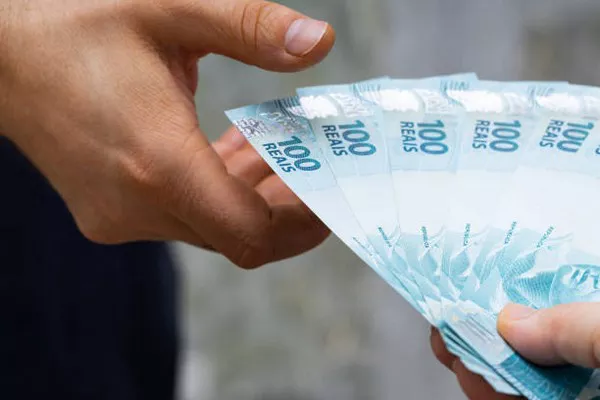The Brazilian Real, often colloquially referred to as the “Brazilian dollar,” is the official currency of Brazil, the largest country in South America. While it may share its abbreviation, BRL, with the Brazilian Real, it is crucial to differentiate it from the United States Dollar (USD), often simply referred to as the “dollar.” In this article, we delve into the origins, history, and key features of the Brazilian Real to provide a comprehensive understanding of this currency.
Historical Background
The Brazilian Real was introduced on July 1, 1994, replacing the Cruzeiro as a response to hyperinflation that plagued the Brazilian economy during the late 20th century. The Plano Real, a comprehensive stabilization plan, was implemented by the government to curb inflation and bring economic stability. As part of this plan, the Brazilian Real was introduced as the official currency, and its value was initially pegged to the U.S. dollar to instill confidence among investors and stabilize the economy.
Key Features of the Brazilian Real
Symbol and ISO Code: The symbol for the Brazilian Real is “R$” and is often placed before the numerical value. The ISO code for the currency is BRL, which is used internationally to denote transactions involving the Brazilian Real.
Banknotes and Coins: The Brazilian Real is available in various denominations, both in banknotes and coins. Banknotes are issued in denominations of 2, 5, 10, 20, 50, and 100 reais, while coins are available in values of 1 real and smaller denominations, including 50, 25, 10, 5, and 1 centavo.
Central Bank: The Central Bank of Brazil, known as Banco Central do Brasil, is responsible for issuing and regulating the Brazilian Real. It plays a crucial role in maintaining monetary policy, controlling inflation, and ensuring the stability of the currency.
Exchange Rate: The exchange rate of the Brazilian Real is influenced by various factors, including inflation rates, interest rates, and economic stability. The Central Bank periodically adjusts the exchange rate to align with economic conditions and maintain competitiveness in the global market.
Economic Factors Influencing the Brazilian Real
Inflation: Inflation has historically been a significant challenge for the Brazilian economy. The introduction of the Brazilian Real aimed to address hyperinflation, and the Central Bank continues to implement policies to keep inflation in check. High inflation rates can erode the purchasing power of the currency, affecting the overall economy.
Interest Rates: The Central Bank of Brazil uses interest rates as a tool to control inflation and manage economic stability. Higher interest rates can attract foreign investment, boosting the demand for the Brazilian Real. Conversely, lower interest rates may lead to depreciation as investors seek higher returns in other markets.
Economic Performance: The overall economic performance of Brazil, including factors such as GDP growth, trade balances, and fiscal policies, influences the value of the Brazilian Real. A robust and growing economy tends to strengthen the currency, while economic challenges can lead to depreciation.
Global Impact and Trade Relations
The Brazilian Real is not only significant within the borders of Brazil but also plays a crucial role in international trade and finance. Brazil, as one of the world’s largest economies, engages in global trade, and the value of the Brazilian Real affects the cost and competitiveness of Brazilian exports and imports.
Trade Balance: The exchange rate of the Brazilian Real directly impacts the country’s trade balance. A weaker Real can make Brazilian exports more competitive in the global market, potentially boosting the country’s trade surplus. Conversely, a stronger Real may make imports more affordable but could impact export competitiveness.
Foreign Investment: The attractiveness of the Brazilian Real to foreign investors is influenced by various factors, including interest rates, economic stability, and political conditions. Foreign investment can contribute to economic growth but can also lead to currency fluctuations.
Challenges and Risks
While the Brazilian Real has contributed to economic stability in Brazil, the currency faces challenges and risks that can impact its value.
Political Instability: Brazil has experienced periods of political instability, which can create uncertainty in the financial markets and lead to fluctuations in the value of the Brazilian Real. Investors closely monitor political developments to assess the risks associated with currency investments.
External Shocks: Global economic events, such as financial crises or changes in commodity prices, can have a significant impact on the Brazilian Real. The currency is vulnerable to external shocks that may affect investor confidence and trigger volatility.
Conclusion
The Brazilian Real, often mistakenly referred to as the “Brazilian dollar,” holds a crucial position in the economic landscape of Brazil. Its introduction in 1994 marked a significant milestone in the country’s efforts to combat hyperinflation and achieve economic stability. Understanding the factors that influence the value of the Brazilian Real is essential for investors, businesses, and policymakers navigating the complexities of the global financial market. As Brazil continues to play a vital role in international trade and finance, the dynamics of the Brazilian Real will remain an integral aspect of the country’s economic narrative.


